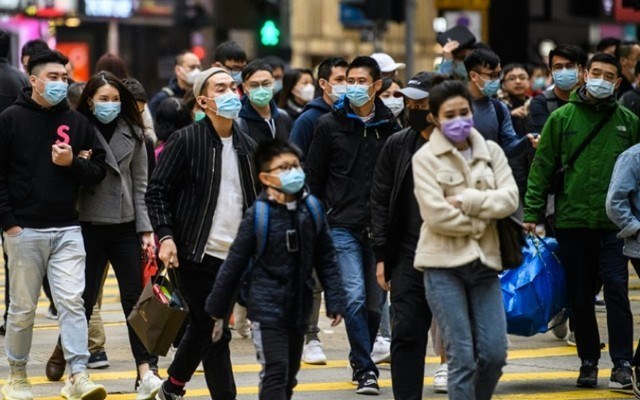The second week of February, and Richmond, B.C., feels deserted. There’s no problem finding a seat at a restaurant; the problem is finding an open restaurant. Having suffered up to 90 per cent reductions in business, most have no affordable way to maintain a regular schedule. The ripple effects are staggering—from direct staff employment, to food and beverage suppliers, on up many converging chains. One can only imagine what’s happening in China.
Two days later I fly to Tokyo. Haneda airport is mobbed, as always, but in its Japanese food courts, the usual culinary miasma of intertidal-zone-plus-deep-fry is now laced with zephyrs of evaporating hand sanitizer. The vast majority of people are masked. It seems grave, but you can still tell when they smile or laugh; the essence of human expression is in the eyes.
Onward to Hokkaido, each transfer like walking the set of a dystopian film about a future where no one can afford to interact directly with another. So many wear masks we feel naked, despite the fact these are only placebos when it comes to disease acquisition. They do, however, make sick people less infectious and remind you not to touch your face. Ironically, many now touch their faces more: donning, removing, adjusting. Most know it’s about handwashing and your state of health, but it’s still hard to swallow the paranoia. Someone sneezes or coughs without covering up and the crowd becomes indignant, a mob that wants the authorities called in.
Reality: We dwell in an invisible storm of pathogenic propagules—viruses, bacteria, fungal spores—that coat us daily in the fine flour of potential disease. Buffered by the healthy functioning of our immune systems, when we do succumb it’s to a numbers game: exposure during a spell of fatigue, low biorhythm, or to a novel pathogen.
The good news: with everyone masked, the air is probably less-saturated with disease than ever. In bathrooms, people crowd the non-touch basins—washing from the elbows down, fingers held aloft to rinse, as if heading into surgery.
As we travel Japan, the situation worsens. The ham-fisted quarantine of an infected cruise ship virtually guarantees a disaster that soon materializes. From such nodes, filaments of disease reach slowly into the fabric of society. Precautions increase; like 95 per cent of fellow travellers, we now wear masks back to Canada. Too much soap and hand-sanitizer has transformed our hands into pink, peeling flippers, and we worry whether erasing your natural biome increases vulnerability. Who knows? There’s little information available from a medical establishment that offers only common-sense bromides. We are on our own.
At YVR, bizarrely few are wearing masks, despite news that an infected woman arrived here a week ago from Iran via Montreal. They don’t say which flight. Such details are lacking in every news item and report on this epidemic, sparing someone or something. A crashing stock market offers hints as to what. Events are now unfolding as per every science-fiction outbreak book, creating a de facto club of dead-but-prescient writers.
A day later I’m on a flight to Frankfurt, the only person in my section with a mask. Frankfurt airport offers similar cognitive dissonance: people here feel safe. They are not. The disease is exploding in Northern Italy, where I am heading; more cases in France; Switzerland as well. Despite the growing calamity, borders remain open all over Europe. Madness.
Working in ski resorts, with people coming and going from everywhere, I fight every urge to leave. Large gatherings are now prohibited. I self-prohibit small gatherings—trams and gondolas—when I can. When I can’t, ski buffs are my new surgical mask. I wash them out in my hotel room, drying them for the next day. At the top of lifts I tear them off, eager to breath fresh alpine air. But it’s an ill wind that blows.
In staid Klosters, you’d never know anything was afoot, but as we drive toward Italy in a snowstorm, news follows like tumbling flakes: doubling cases, travel restrictions. We now realize we can’t do this, that crossing into Italy would be a single act of recklessness—like skiing a slope with a low but clear avalanche danger—to which we couldn’t answer to our families. We spend the night near the border, then turn around in the morning.
The sun is out. As always, tiny villages huddle beneath snowy peaks stark against a cerulean sky, the timelessness of a region where some things never change.
And yet, as we pass an ambulance at a border tunnel where mask-wearing EMTs and armed guards screen cars coming from Italy, one thing is clear: everything has changed.




